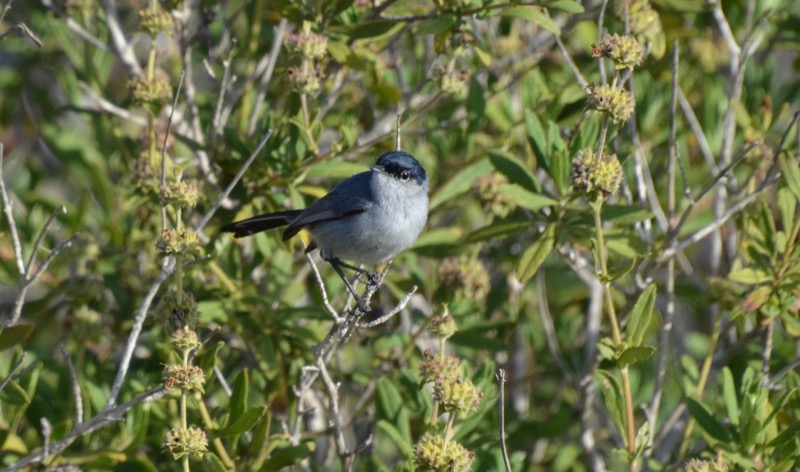
Warren Tam
Listed as Threatened in 1993 under the Endangered Species Act, this subspecies population of the California gnatcatcher is dwindling. Fire, habitat loss and fragmentation due to development of roads and buildings, and nest predation have all been factors leading to their decline. Fragmentation is especially problematic for these birds as they don’t normally make long-range movements. Roads and buildings potentially act as barriers to populations of California gnatcatchers, and gene flow between populations is cut off. Predators of the California gnatcatcher include free-roaming and feral cats, corvids (ravens, crows, and jays), snakes, medium-sized mammals such as raccoons, and rodents. Situated about two to three feet off the ground in a cup-like nest, California gnatcatcher eggs can make an easy meal for a hungry predator. In addition, the brown-headed cowbird will also nest-parasitize a gnatcatcher nest. This means that a cowbird will remove the eggs the gnatcatcher has already laid, and lay their own eggs in the nest, leaving the eggs to be cared for by the adult gnatcatchers.
The California gnatcatcher is a small and inconspicuous songbird, with drab light to dark grey and brown plumage. A keen eye will spot their white eye ring. The adult male bird will get a dark black “cap” during breeding season. Most would never take notice of this bird until hearing their signature call: “mewww…mewww…” much like the mew of a kitten.
They don’t only eat gnats, as their name suggests: their diet consists of mostly insects including ants, flies, moths, true bugs, and some spiders. They also do not require water since they are able to get the moisture they need through their diet, like many of our other resident bird species in Point Loma peninsula.
The California gnatcatcher inhabits areas of healthy coastal sage scrub habitat where they nest and feed on insects amongst plants that include California sagebrush and buckwheat in the coasts of southern California and Baja, Mexico. Coastal sage scrub habitat becoming harder to find these days due to development and fire, but at Cabrillo National Monument, it is intact and near pristine. Cabrillo National Monument contains large swaths of this coastal sage scrub habitat, perfect for welcoming back these little birds.
